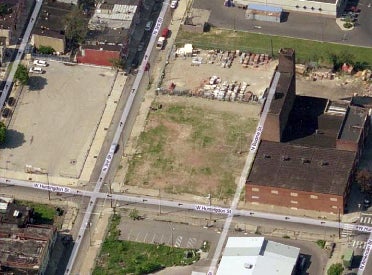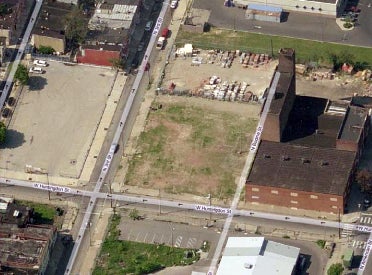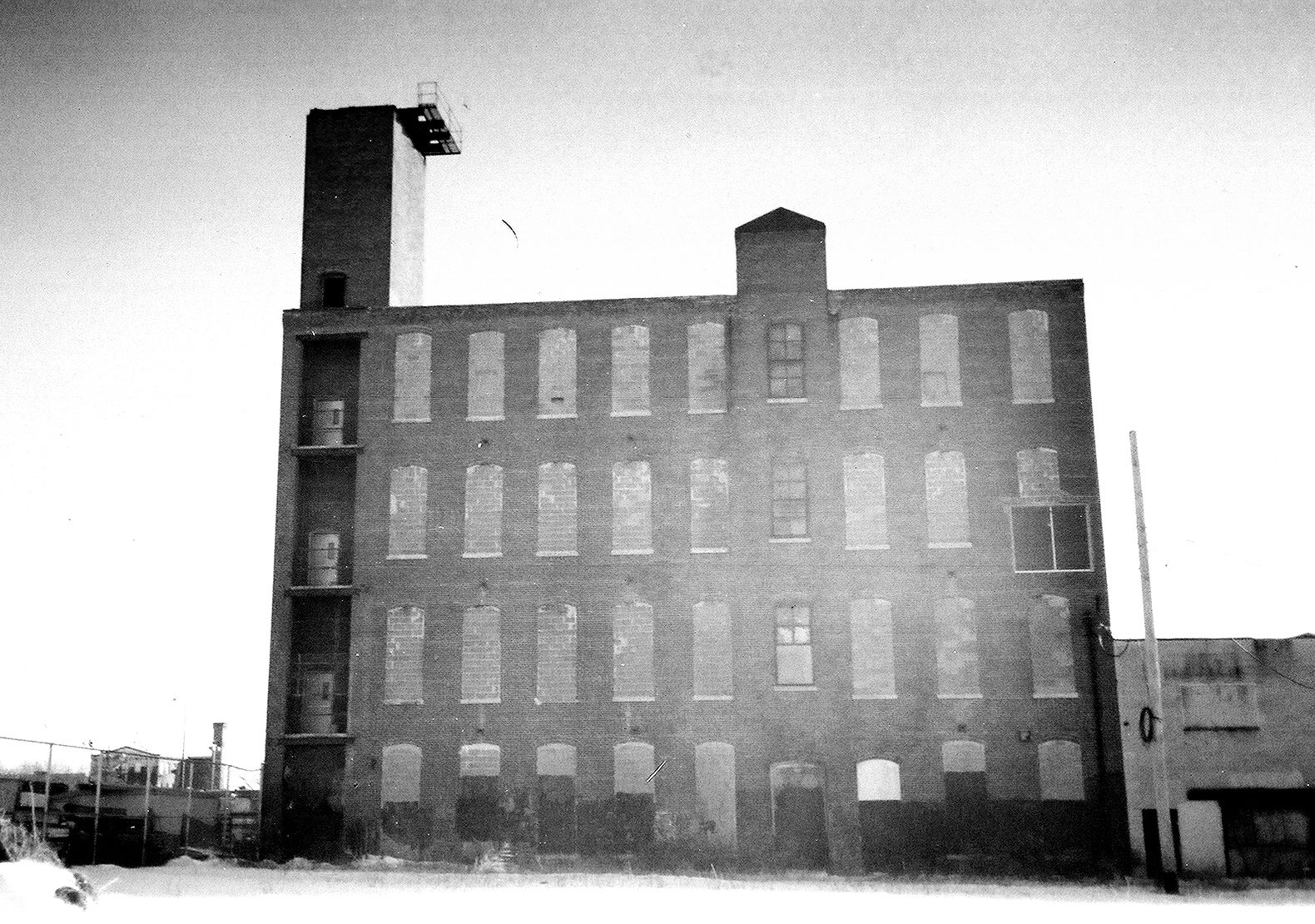3 ‘Infill’ spaces, 3 distinct challenges
February 22, 2010
By Thomas J. Walsh
For PlanPhilly
Infill Philadelphia, an ongoing initiative of the nonprofit Community Design Collaborative, kicked off its “Industrial Sites Design Challenge” last week at the Urban Outfitters headquarters, within the stylish, re-worked former pipe shop at the Navy Yard.
It was a fitting setting for the kind of re-use being championed by the Collaborative, wherein abandoned or underused industrial buildings and sites around the city are retrofitted for modern use. That includes new homes and apartments, office space, and retail shops – but also new industrial uses.
Though Philadelphia is often referred to as “the former Workshop of the World” for its many shuttered factories and long-gone shipbuilding facilities, one out of every five jobs in the city is still within the industrial sector, said John Grady, executive vice president of the Philadelphia Industrial Development Corp. (PIDC).
“We’re a city that has balance,” Grady said, adding that “understanding the markets that you’re in” is the key driver for current economic development. Philadelphia, for example, is a city with 105 industrial parcels that have more than 20 acres available. That’s important for modern industry, which seeks out wide spaces for one-story manufacturing and easy access for shipping and trucking.
Grady was a speaker and a panelist at last Tuesday’s event, which unveiled three projects to “serve as prototypes for bringing new industrial sectors and production formats into the city in ways that are sensitive to neighborhoods.”
Other panelists were Paul Sehnert, director of real estate development at the University of Pennsylvania; Eva Gladstein, executive director of the city’s Zoning Code Commission; and Nina Rappaport, a New York City architectural critic, professor and the publications director for Yale School of Architecture Books.
“I, as a New Yorker, would like to say that this is a very innovative proposal for mixed-use industry,” Rappaport said. “It’s something that many planners are interested in.
“In New York lately – well, two years ago – they were primarily interested in turning our former industrial waterfront into ‘gold coast’ housing, without any understanding of what you can do with light industries. What is happening with this Philadelphia plan should be very forward-thinking and a model for other cities.”
Grady said PIDC’s long-awaited Industrial Market and Land Use Strategy report is due by Spring, and that the industrial sector belongs in the same breath as “eds and meds” (education and healthcare) when it comes to speaking of the city’s growth job markets.
The firms involved in the Industrial Sites Design Challenge will present their final presentations in May. The challenge and the “Retooling Industrial Sites” on exhibit at the Arch Street AIA Philadelphia space through next month are part of the Collaborative’s third phase, focusing on industrial spaces, in partnership with PIDC, Drexel University, Temple University and Penn.
The projects
The three sites selected by nine jurors are volunteer projects from firms and nonprofits, including the quasi-governmental PIDC, and involve neighbors and community organizations. Separated into small, medium and large categories, they include the re-creation of a wing from an old factory to be used as space for artisans, a mixed-use project within a multi-building manufacturing plant, and the development of a parcel along the Schuylkill River in Southwest Philly.

The “small” category winner is Center City-based SMP Architects, working with William Proud Masonry, the owner and developer of a four-story brick building on American Street, near 3rd and Lehigh Avenue in North Philadelphia. A textile design firm (Colette & Blue) is the possible new tenant for what is being looked at as a “light industrial” re-use. Proud is working with the Hispanic Association of Contractors & Enterprises as a co-client of SMP.

A Brooklyn model
The “medium” site is nearby, to the south at 100 Oxford Street, near Front Street and Cecil B. Moore Avenue in Kensington, adjacent to the Market-Frankford El. The volunteer firm is DIGSAU, which has been doing work in nearby Northern Liberties of late. The developer is the Brooklyn-based Greenpoint Manufacturing and Design Center, with the Women’s Community Revitalization Project (WCRP) of Philadelphia. The community partner on the project is the Kensington South Neighborhood Advisory Council.

This would be the first project outside of New York for Greenpoint, which has rehabilitated six North Brooklyn buildings – more than half a million square feet of space – for more than 100 small manufacturing enterprises, artisans and artists, employing about 500 people. The re-use goal for Oxford Street would be similar for Greenpoint, with WCRP working with DIGSAU on an affordable housing element.

“Greenpoint is serious about doing business here in Philadelphia,” said Jeff Goldstein, a principal at DIGSAU, after Tuesday’s panel discussion. “They’ve been laying the groundwork for about a year now. The [Kensington] site is surrounded by a pretty vibrant neighborhood.”
Goldstein said the process is just getting started. “We don’t have a real-life client yet [as a tenant],” he said. “We’re going to go up to Brooklyn and tour some of the buildings that they’ve done, to see some of the users that they have. We’ve got to understand how to accommodate both the industrial and residential uses. It’s really trying to find synergies between the two.”
Schuylkill brownfield
The “large” site is one PIDC is taking on itself as owner and developer. It is a 50,000 square-foot brownfield, just north of Bartram’s Garden in Southwest Philadelphia, along the developing Schuylkill River Trail and directly across the river from the Grays Ferry site of the former DuPont Marshall Labs.
The volunteer firm is Charles Loomis Chariss McAfee Architects, with community partners Southwest CDC and the University of the Sciences. Infill Philadelphia says the potential re-use is as a “high finish” flex space for labs, pharmaceutical space, and research and development – perhaps even the creation of a campus.
The Design Challenge kickoff hosted William Struever, president and CEO of Baltimore- based Struever Bros. Eccles & Rouse, as the keynote speaker. Struever Bros. specializes in adaptive re-use of obsolete industrial buildings and brownfields, and recently received an excellence award from the Urban Land Institute for Baltimore’s Clipper Mill redevelopment.
“My strong advice is if you can find real live users, the whole planning and thinking and rejuvenation process will be much more real,” Struever said, after citing a litany of firms – a natural foods company, a high-end clothing manufacturer, a global seafood provider, etc. – now inhabiting former locomotive foundries, soda factories, soap plants, canneries, breweries and tobacco warehouses.
“Users are what drive the reality of the re-use of these old buildings.”
Contact the reporter at thomaswalsh1@gmail.com.
WHYY is your source for fact-based, in-depth journalism and information. As a nonprofit organization, we rely on financial support from readers like you. Please give today.









